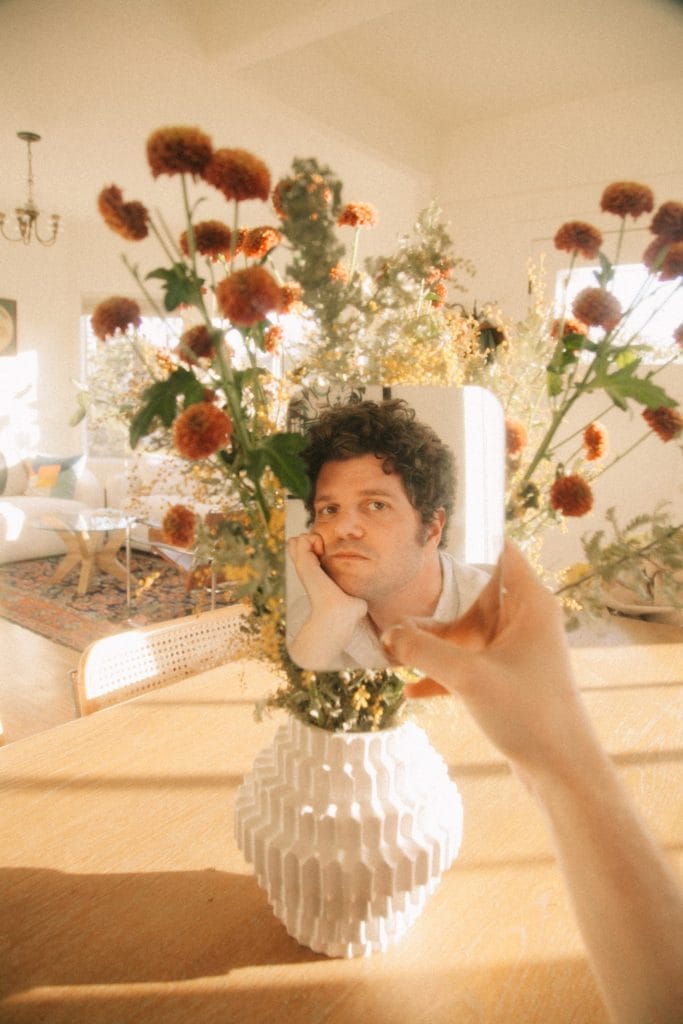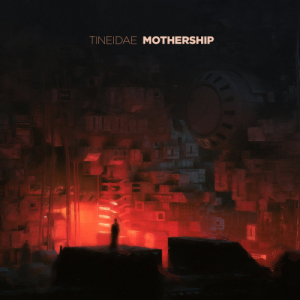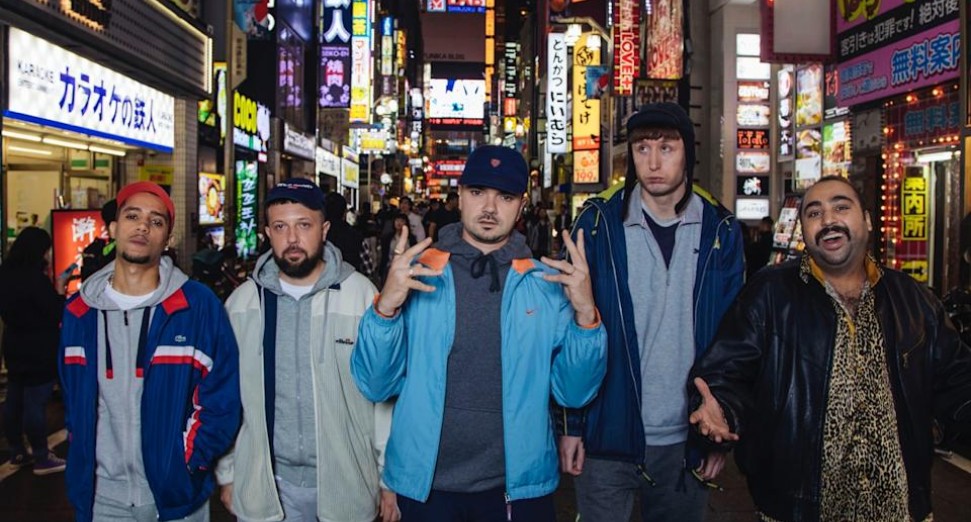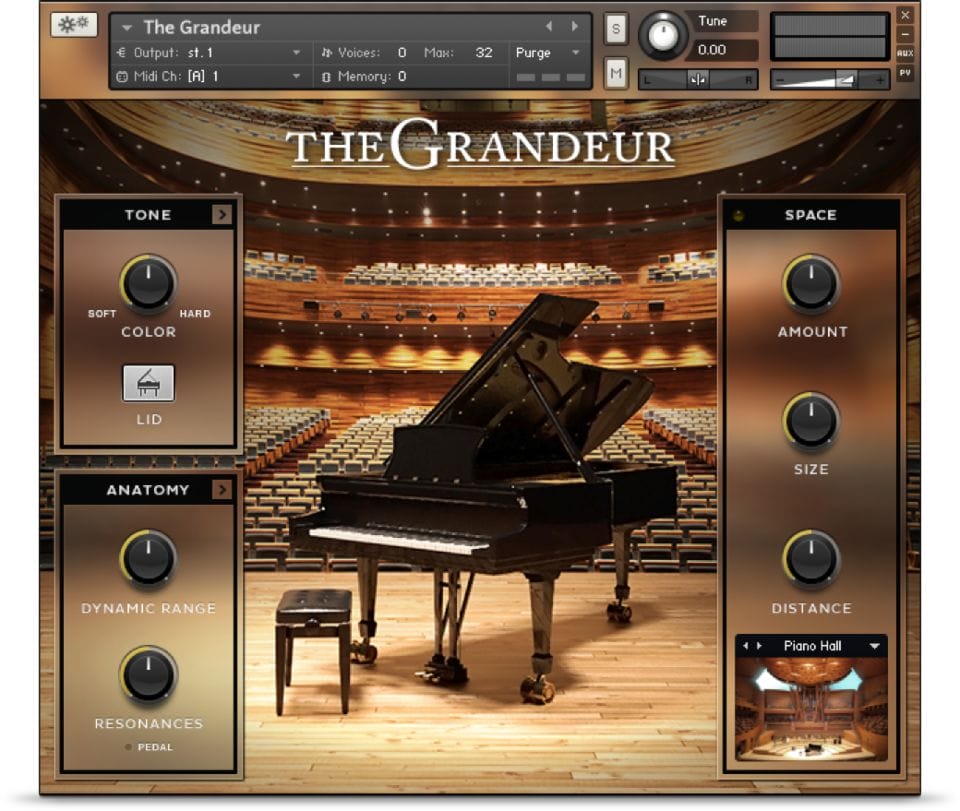
How It Was Made: Wingtip – Luckyman (Nettwerk)
Wingtip’s new album Luckyman marks a clear turning point for Los Angeles-based producer, songwriter, and multi-instrumentalist Nick Perloff-Giles. After years of exploring pop, dance, and indie rock, he brought those threads together into a sound that feels complete and focused. Recorded in an Airbnb studio tucked into the Malibu mountains and finished across a handful of Los Angeles sessions, the album captures the optimism that comes from both creative freedom and personal stability.
The recording process was minimal in setup but rich in collaboration. Working with Theo Kandel and Jack Kleinick, Nick shut out distractions and tracked most of the record live. The result combines the polish of contemporary production with the warmth of performance, pulling from the soft rock tones of the seventies and eighties while building them into arrangements that feel fully modern. It reflects an artist who understands his tools and knows how to make them serve the song.
In this edition of How It Was Made, Wingtip walks through the plugins and tools that shaped Luckyman, including Kontakt’s The Grandeur for natural piano tones, Baby Audio’s Spaced Out for atmospheric depth, and Nomad Factory’s Magnetic 3 for subtle analog coloration. Each element connects back to the same goal: keeping the music grounded in feeling while giving it the clarity and size of a live record.
Kontakt’s ‘The Grandeur’ (Native Instruments)
This album was all about trying to merge a lot of the stylistic directions I’ve taken in the last few years, from dance to pop to rock. A key thing to getting that merge right was getting natural-sounding parts through plug-ins, since we made most of this in a living room with pretty limited access to live instruments. The whole range of pianos in Kontakt is great, but the grandeur is particularly good for a resonant, natural grand piano sound that has enough life (we usually set the lid to closed and turn on the pedal and key noises) that you wouldn’t notice it in the mix.
The key (pun, sorry) to natural sounding piano from a plug-in is to really try to reverse engineer the instincts of a pianist, and integrate that into the settings and MIDI. It’s not enough to just play with the velocity; we automated the sustain pedal for each different section in slightly different ways each time, we upped the resonance and dropped the dynamic range for a flatter, more mix-ready sound, and added in the slightest bit of short-distance reverb (Concert Hall 3 setting), trying to go for a piano that sounded like it was recorded in a warm, quiet room. Bringing up the MIDI velocity while dropping the tone sound all the way to its softest setting also helped get the ‘feel’ of live piano without that ‘plunk’-y sound plug-in pianos can sometimes have.
Something we did a lot to get a kind of hyperreal piano sound on a lot of the album was record real, upright piano parts that were a little out of tune and just tracked on a ribbon mic, and layer those underneath the nice, warm sound of the Grandeur. It’s sometimes hard to perfect that ‘room’ sound with just plug-ins, but it’s also hard to get the full body of a piano in a recording; this helped us get both!
Tupe
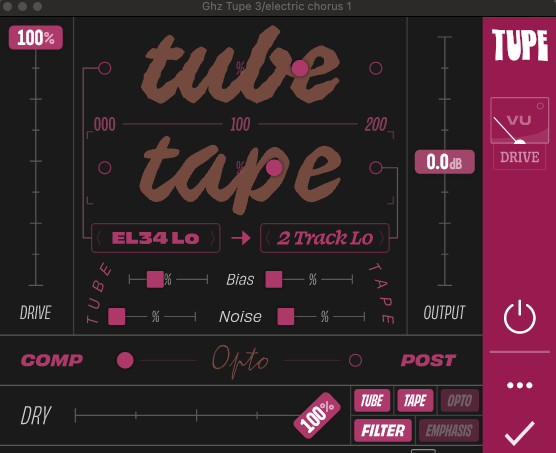
Tupe is kind of a genius plug-in that makes me wonder why it took so long for someone to come up with it. It’s a tube/tape emulator hybrid, so the tube part simulates the sound of vintage tube amplifiers, which add a natural warmth and slight grit when you push them, and then the Tape part mimics reel-to-reel tape machines, which smooth out harshness, add subtle saturation, and can give a nice low-end thickness.
Tupe was our go-to anytime we felt like a part needed a bit more ‘oomph’ but didn’t want to actually distort the track much. In this setup, you can see both the tube stage (EL34 Lo) and the tape stage (2-Track Lo) engaged. The tube adds a bit of harmonic richness and edge, while the tape rounds things out with that classic analog glue.
The Drive is pushed just enough to bring out subtle coloration without overcooking it, and the Bias/Noise controls help dial in a more realistic tape feel. There’s also a light Opto compression happening post-saturation, which reins in the peaks and keeps the sound cohesive. Finally, the dry/wet mix is balanced to 100%, meaning we’re committing fully to that saturated, analog-like texture rather than just blending it in. The result is a warmer, thicker signal that doesn’t feel overly digital.
Spaced Out by Baby Audio
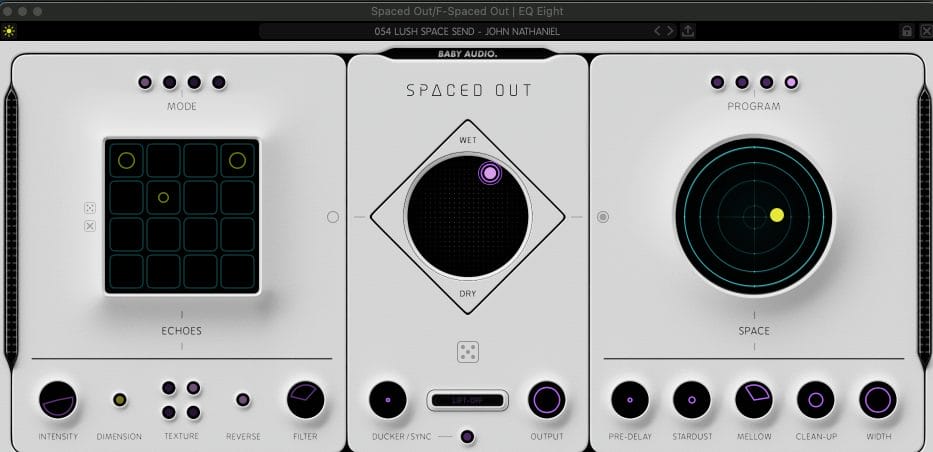
We also used Spaced Out by Baby Audio to add depth and atmosphere. It’s basically a creative delay/reverb unit that lets you build huge, spacey textures. On the left you can see the Echoes grid, which lets you place rhythmic delays in a pattern, while the right side is the Space orb, where you control the reverb character and movement.
Here, the mix is set pretty wet, so the signal is swimming in ambience. The Stardust and Mellow dials are giving it a soft, dreamy shimmer, while the Width control opens everything up in stereo. It’s less about a natural room sound and more about creating this floating, cosmic environment for the track to sit in; again, we were really trying to merge plausible-sounding instrumentation with super synthetic textures.
Magnetic 3 by Nomad Factory
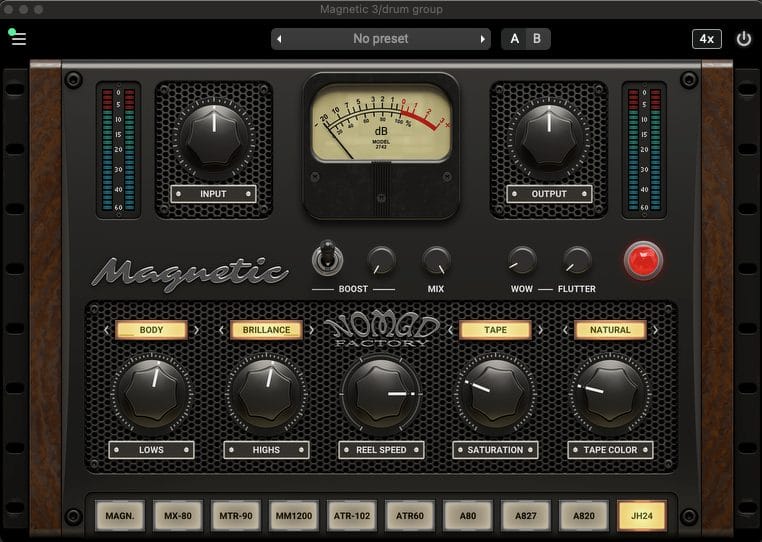
A lot of the challenge of this record was making the drums feel like dance music drums – thumpy, powerful, super low end-y – but ‘sound’ acoustic. For that, I ran them through Magnetic 3, which is one of those tape emulation plugins that just makes everything feel bigger and more alive. It’s got controls for body and brilliance, so you can shape the lows and highs, plus tape saturation and color to add that warm, gritty character you’d get from an old reel-to-reel machine. I played around with the reel speed too — slowing it down fattens up the sound, while speeding it up makes things punchier — and landed somewhere in the middle so the drums had both weight and snap.
What I love about it is that it doesn’t just make the drums louder, it makes them feel like they’re glued together, like you’re hearing a real performance instead of separate hits. Even the little bit of wow and flutter adds this subtle wobble that keeps it from sounding too perfect. It’s basically my way of making the drum bus feel less “in the box” and more like it’s running through a classic tape deck.
Quick Tips For Making Music
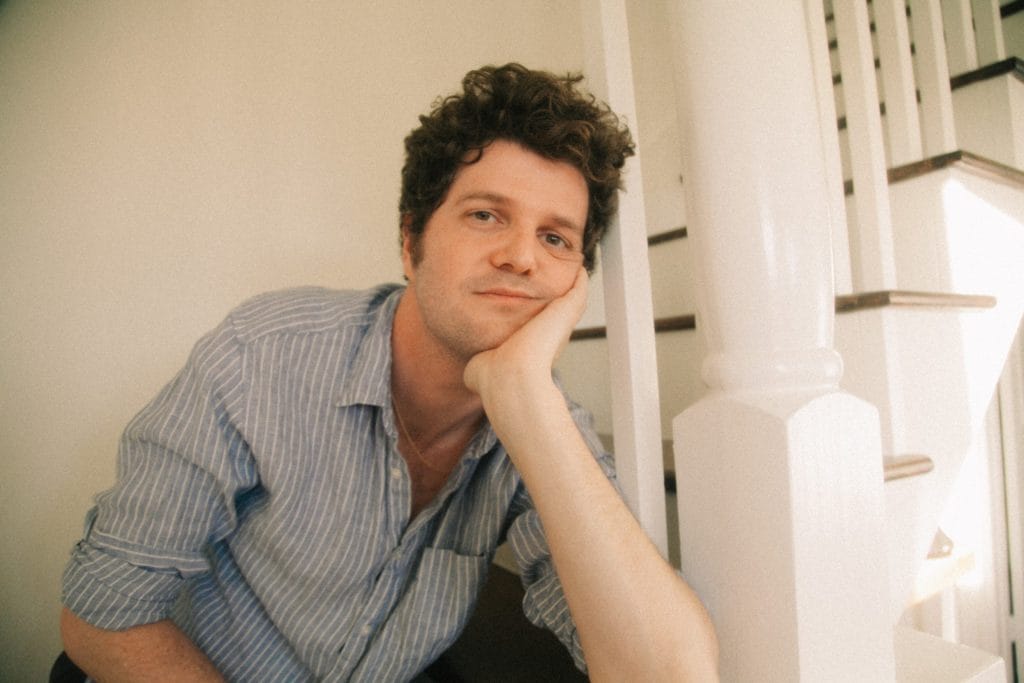
#1
Less is pretty much always more – I can’t tell you the number of times I wanted louder and jammed in a 3rd, 4th, 5th layer, only for everything to feel muddy and quiet. The tracks that are the loudest and punchiest on this album are the ones with like, 10 tracks total.
#2
Your reverb decay is almost always too long – I find myself chasing that ‘big’ sound by adding really long, boomy decay, but there’s so much power and interesting texture that a short, shimmery decay can add.
#3
For big-sounding gang vocals and chants, the trick is as much in the room as it is the number of takes; we did a bunch in the bathroom of the studio space, with a mic on the floor, and merged those with more straightforward close-to-mic takes, and the result is this kind of vocal wall that feels really natural and big.
